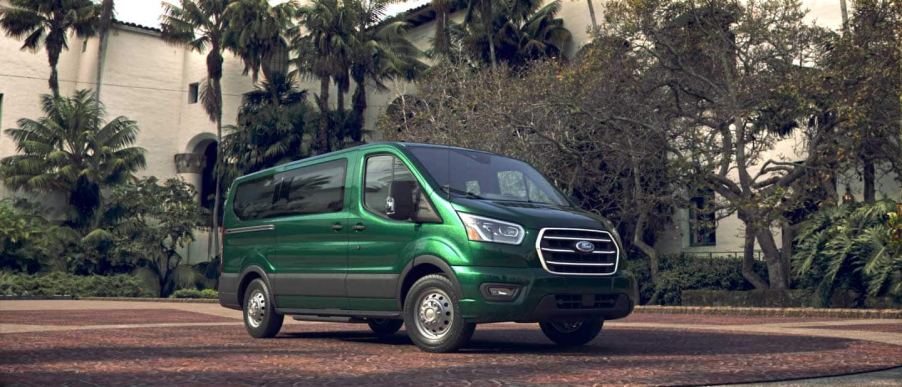
Full-Size Conversions Vans Are Still A Thing – A Beautiful Large Thing
Full-size conversion vans were the cats meow back in the 1970s. The large van platforms provided lots of room for people to customize them inside and out. But, by the mid-1980s, market share started retracting for the regular consumer. Although the vans were still popular for commercial business fleet sales, the regular market had instead started to embrace small pickups for their affordability and ease of customization. The mini-trucking craze took hold. But, things would change again in just a few years.
Where did conversion vans go?

In the 1990s, the SUV craze began in full force. So, many custom van shops were forced to shut down or change their business accordingly. But, some custom shops are still around and doing well in this new millennium. For example, Sherrod Customs has been around since 1979 and is still building conversion vans for the average consumer. That is not to say they have neglected the truck and SUV market, though. They are active there as well. Paul Sherry Conversion Vans is another company that has kept the conversion genre alive also.
The conversion van of the past
Back in the early 2000s, I had the opportunity to borrow a friend’s full-size conversion van. It was already an old vehicle from the 1980s. But, it had been maintained well. So, my passengers and I got to experience the vehicle in near-excellent condition. The suspension in those vehicles were adjusted to give riders the floating, luxury feeling. The brakes, although working perfectly, were kind of scary (it is hard to stop that heavy of a machine on a dime). It had the hi-top conversion. So, the middle of the roof higher than normal. That area was filled with individually controlled lighting and ventilation ports that could be individually articulated. There was a television and VCR. Of course, there was also swivel captains seating that was geared for extra plush comfort. Overall, the interior had the feel of a private airplane cabin. It even had the customary reclining rear bench that turned into a bed.
Today’s conversion van
Today’s conversion vans are similar, having a suspension that is extra smooth and floaty, comfortable seating, and a traditional convertible bench seat/bed. The televisions have changed to flat-screen units and are usually connected to the internet or a game console of some sort now. Also, some of the units now have massage settings for their swivel seating, lighting has changed to LED bulbs, USB connections are plentiful, wireless headphones are common, backup cameras are standard in most of them, and the vehicles seem to filter out road noise better. In essence, new conversion vans tend to draw on the feel of a more refined personal executive limo, a premium flavor, as it were.
It does not end there, though. The conversion van industry has splintered as companies have begun to specialize. In addition to the traditional conversions, there are now companies specializing in building overlanding rigs. Others cater to the vanlife enthusiasts. Each customer has different needs that their rig needs to fullfill. So, there are more van options now than ever.
The industry is still alive and well
Overall, it is safe to say that the conversion van industry is still alive, although the market share is not the same as before. It still, however, is very much focused on the premium ride experience for its drivers and passengers. Smartly, the industry has embraced new technology in keeping with the times, as well as added features that were not available in the past, such as those massage seats I mentioned before. The conversion van industry, in short, has taken a lesson from business in general, adapt or die. Adapt they have, and the industry continues to have customers drooling over their products. Well done, conversion folks, well done. Full-size conversion vans are still a thing, a big beautiful thing.


